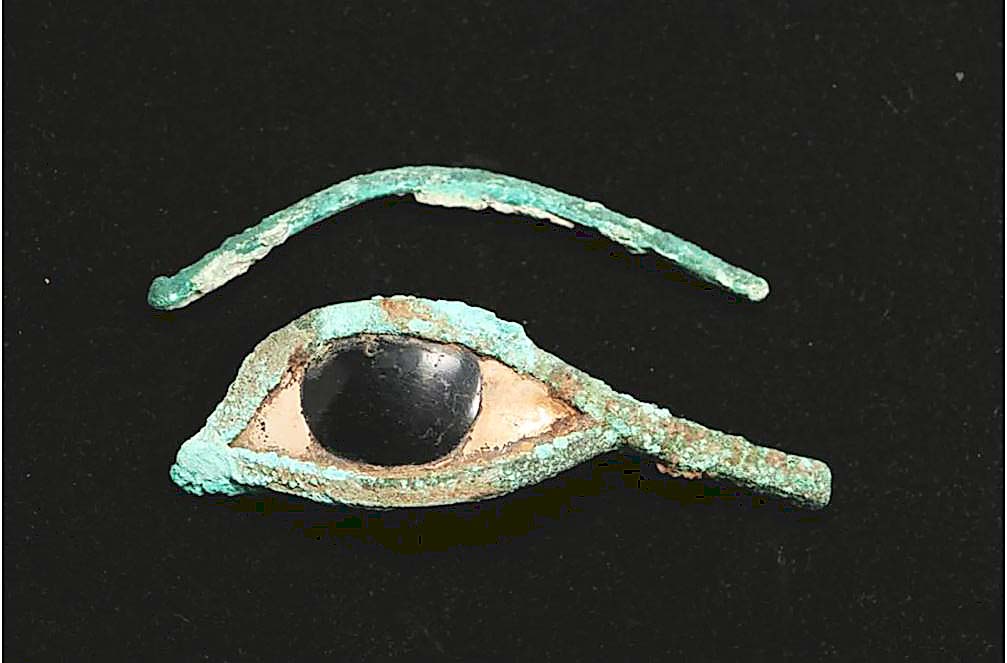
Pride of place went to this mosaic tile of a peacock, top lot in sale at $1,375. Measuring 21 by 21 inches, the tile depicted a peacock with feathers fully unfurled.
Review by W.A. Demers; Photos Courtesy Arte Antico
NEW YORK CITY — A mosaic tile of a peacock, 21 by 21 inches, depicting a peacock with feathers fully unfurled was the top lot in Arte Antico’s December 3 auction, selling for $1,375. The firm’s owner, Douglas Acosta, observed that, fittingly, the auction’s top five lots each stemmed from a different ancient culture, underlining the sale’s title, Art from Around the World. The 247-lot auction offered a collection of Northwest Coast old silver bracelets and spoons, art from China, Southeast Asia, the Americas, Middle East, ancient art, Pre-Columbian Art, textiles and beads, along with African art pieces.
A headrest from Indonesia sparked a winning bid of $1,188. It stemmed from the village of Raja Ampat, an archipelago located off the northwest tip of Bird’s Head Peninsula on the island of New Guinea, in Indonesia’s Southwest Papua province. The large elder’s wood headrest featured carved figures and measured 24 by 14 inches.
Long before the advent of Morovian fish flasks, the ancient Romans adopted the form to hold liquids. Such was the case with a Roman fish bottle with open mouth, scaled body and tail that was offered in the sale. Five inches long, it brought $1,000.

Ancient Romans adopted the fish form to make flasks, such as this fish bottle with open mouth, scaled body and tail. Five inches long, it brought $1,000.
Two Native American kachina dolls performed well in the sale. In the Hopi culture, the dolls represent spirits or deities, originally made as gifts to Hopi children so that they may learn the different stories and spiritual significance attached to them. The first a vintage cottonwood example with polychrome pigment, fiber and feathers, wearing a buffalo head mask. It stood 15 inches high and was bid to $1,000. The other was also of cottonwood, polychrome pigmentation, fiber and feathers. It was 14 inches high and one of the tips of its horned mask had been repaired.
From ancient Egypt, a bronze eye and brow was a striking piece, with stone inlay forming the 3½-inch eye below the arched brow. A simplified expression of the Eye of Horus, in ancient Egypt, the symbol represented protection, health and restoration. Egyptian mythology told of Horus, who lost his left eye while fighting with Seth. Hathor magically restored the eye, and it came to symbolize healing. For this reason, the symbol was often used in amulets. It sold for $875.
Fetching the same amount was a Taino basalt stone Zemi, 8½ inches long. The Walters Art Museum has one in its collection. Peoples in the ancient Caribbean, revered the heads of ancestors as objects of devotion, keeping them in special baskets. They believed the head retained spiritual power, especially the face. Given that actual skulls were prone to disintegrating over centuries of veneration, the Taínos made stone representations of skeletal heads that seem to have fulfilled the same purpose as the keeping of skulls. These are not ancestral “portraits” so much as generalized sculptures with hollow eye sockets.

A Taino basalt stone Zemi, 8½ inches long and representing the head of an ancestor, gaveled for $875.
Also from the Taino culture, a stone game ball incised with geometric designs, 4½ inches in diameter and weighing 4 pounds 13 ounces, from a New York collection made $625.
After the sale, a Taino metate with an extended Zemi head, incised design, standing on four legs, found a buyer at $2,500. From a French collection, these flat surface stones were used to grind corn. Prices given include the buyer’s premium as stated by the auction house. Arte Antico’s next sale will be conducted in late January or early February, date to be announced. For information, 917-536-6049.









